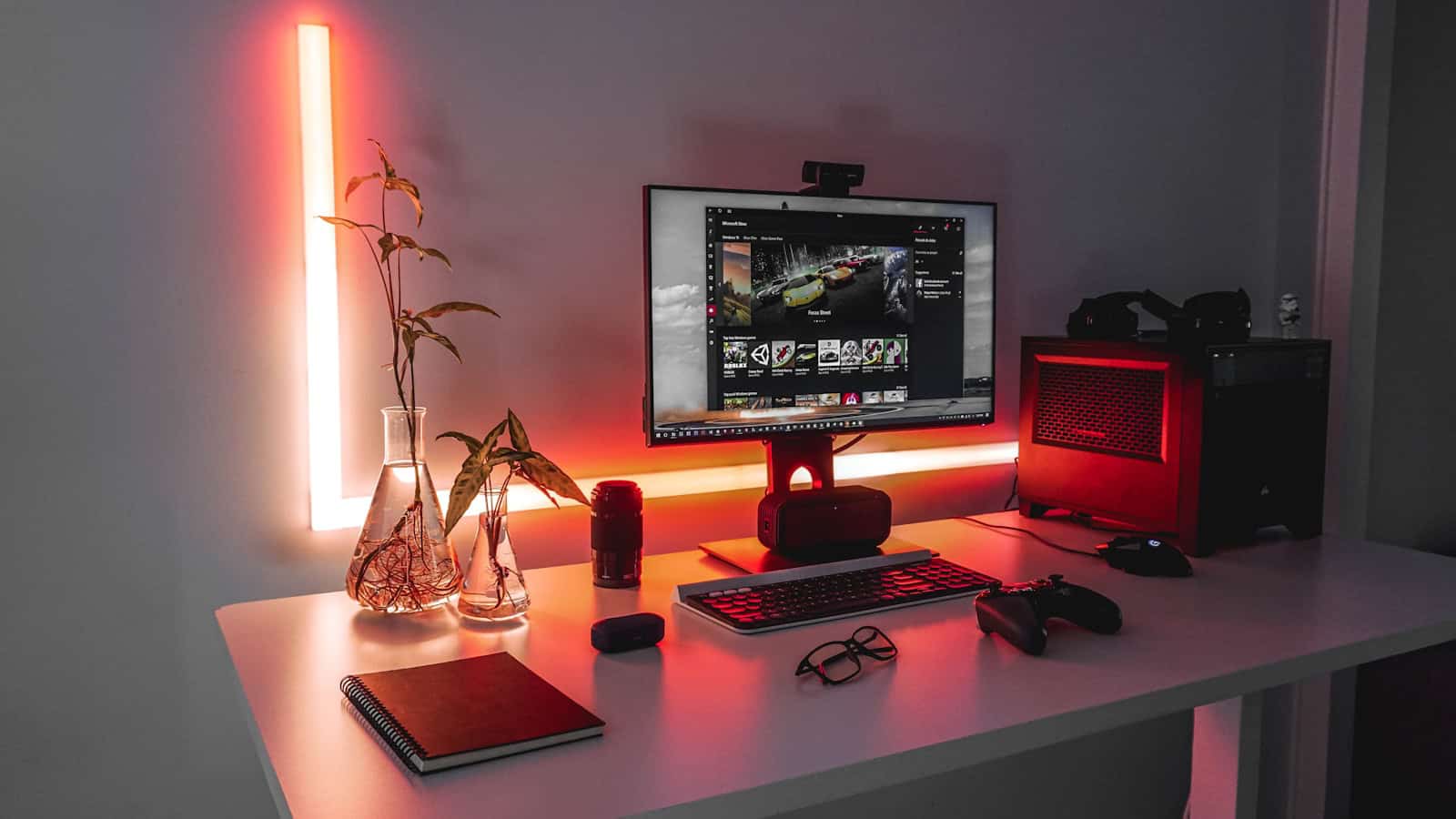Each month, Valve’s Steam Hardware and Software Survey gives us a fascinating glimpse into the gaming world’s collective machine. It’s not just a list of components—this data reflects where the PC gaming community is heading, what tech is falling out of favor, and which specs game developers should optimize for in 2025.
With millions of participants, it’s one of the most insightful hardware snapshots available anywhere. Here’s what the May 2025 survey reveals about the state of the average gaming PC.
Most Popular Components on Steam in May 2025
| Component | Most Popular Spec | % of Users | Change |
|---|---|---|---|
| Operating System | Windows 11 64-bit | 58.30% | ↑ +0.46% |
| System RAM | 16 GB | 43.00% | ↓ -0.86% |
| CPU Manufacturer | Intel | 59.69% | (vs AMD 40.31%) |
| CPU Speed (Intel) | 2.3 – 2.69 GHz | 21.22% | ↓ -0.50% |
| Physical CPU Cores | 6 Cores | 29.79% | ↓ -0.47% |
| GPU Manufacturer | NVIDIA | 74.18% | (vs AMD 17.62%) |
| Most Popular GPU | GeForce RTX 3060 | 4.56% | ↓ -0.01% |
| GPU VRAM | 8 GB | 33.67% | ↓ -0.58% |
| Primary Display Resolution | 1920 x 1080 (Full HD) | 55.35% | ↑ +0.08% |
| Multi-Monitor Resolution | 3840 x 1080 | 53.38% | ↓ -0.20% |
| Total Storage Space | Over 1 TB | 52.41% | ↓ -0.37% |
| Free Storage Space | 100 – 249 GB | 22.84% | ↓ -0.37% |
| VR Headset | Oculus Quest 2 | 29.10% | ↓ -0.74% |
| Language | English | 38.24% | ↑ +2.85% |
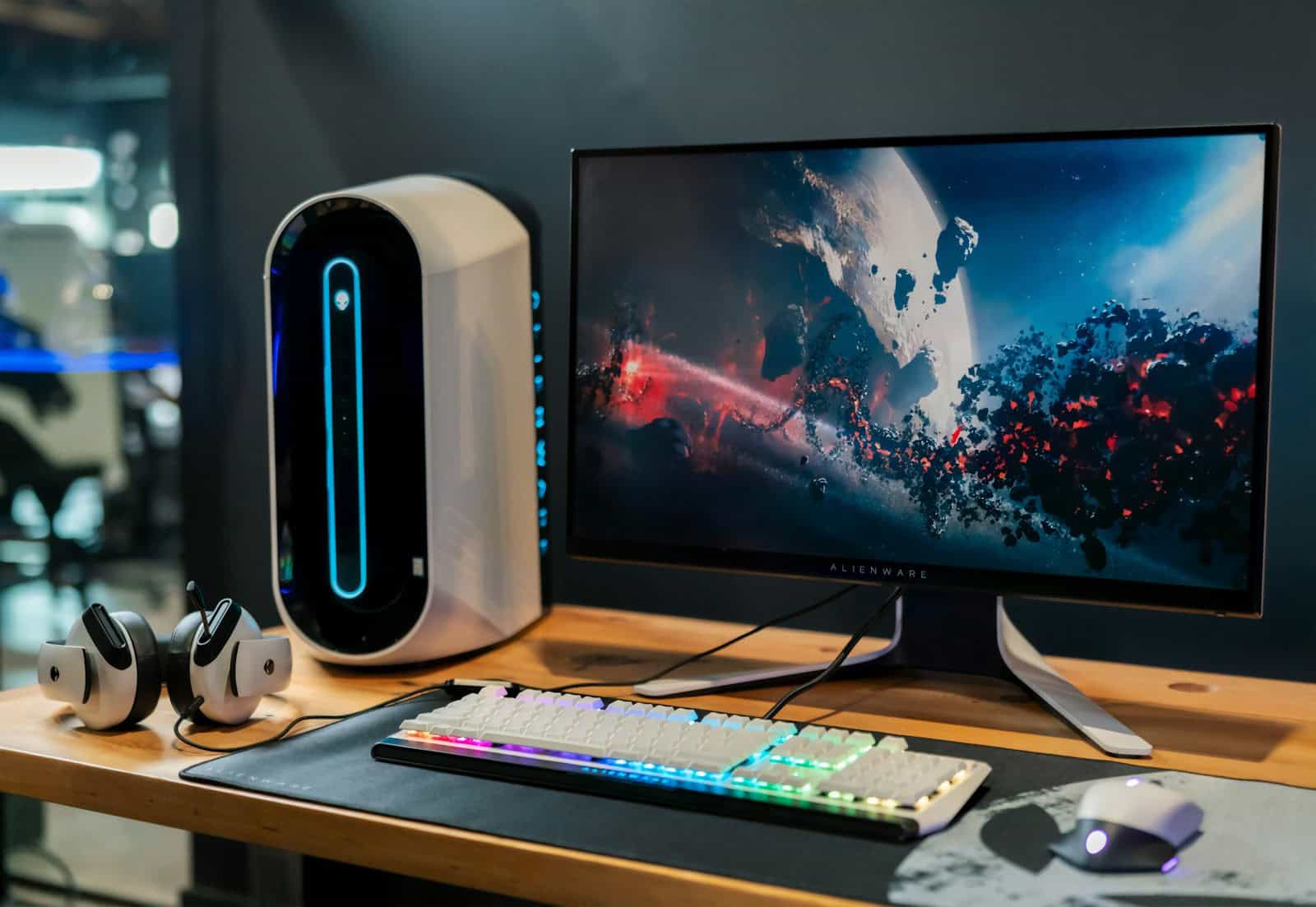
What the Data Tells Us
NVIDIA Still Dominates the GPU Market
With over 74% of Steam gamers using NVIDIA graphics cards, it’s clear the company remains the go-to for performance and reliability. AMD holds a respectable 17.6%, with Intel GPUs trailing far behind. The GeForce RTX 3060 leads as the most-used single card, reflecting its strong balance of price, performance, and availability since its launch.
1080p Is Still King—But That May Be Changing
Despite the availability of 1440p and 4K monitors, 55% of Steam users still game at 1080p. It’s the sweet spot for competitive performance and affordability, especially when paired with mid-range cards like the RTX 3060 or RX 6700 XT. However, multi-monitor setups—often associated with sim and productivity users—are also prominent, with 3840×1080 setups seen in over half of those cases.
Intel Leads in CPUs, But AMD Holds Ground
Intel continues to lead the CPU market with 59.69% share. Most gamers use 6-core processors, showing a trend toward CPUs that balance multitasking and gaming performance. AMD, though behind in total share, remains strong thanks to its efficient Ryzen 5 and 7 processors, particularly popular in DIY builds.
RAM & Storage Trends
While 16 GB of RAM remains standard, it’s slightly down from previous months—likely due to more users upgrading to 32 GB for future-proofing and heavy multitasking. Over half of gamers now have more than 1 TB of total storage, which makes sense given the size of modern games like Call of Duty, Baldur’s Gate 3, and Starfield.
VR Adoption Still Slow But Steady
The Oculus Quest 2 remains the dominant headset, with nearly a third of VR gamers using it. However, adoption across Steam overall remains modest. Meta’s newer Quest 3 and premium headsets like the Valve Index are making slow gains but haven’t unseated the affordability of the Quest 2 yet.

What This Means for Gamers and Developers
For gamers, these stats can help benchmark where your current build sits. If you’re still on 8 GB RAM or a 4-core CPU, it’s probably time to consider an upgrade to keep up with modern gaming demands. For developers, optimizing for 6-core CPUs, 8 GB of VRAM, and 1080p resolution is still the safest bet for performance parity across the largest segment of players.
The May 2025 Steam survey once again reinforces that while ultra-high-end setups get the spotlight, the majority of PC gamers are still playing on mid-range systems—and developers are building with that in mind. Expect the rise of 1440p and 32 GB RAM to continue into the next year, especially with demanding games like Stalker 2, Dragon’s Dogma 2, and Ark 2 on the horizon.
Most Popular Gaming GPUs on Steam Right Now
Steam’s May 2025 hardware survey shows a clear picture of where PC gamers stand when it comes to GPUs: NVIDIA remains dominant, and the RTX 3060 continues to be the workhorse card for the average gamer. Let’s break down the key players.
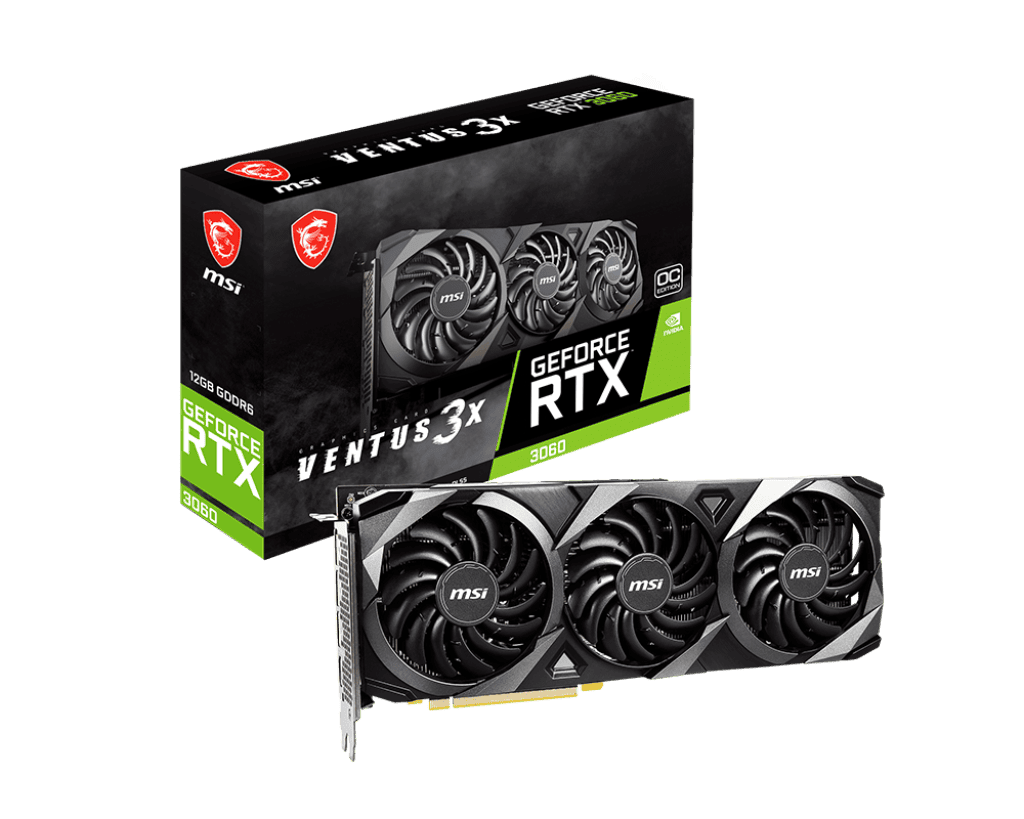
NVIDIA GeForce RTX 3060: Still the King of GPUs
- User Share: 4.73%
- Trend: +0.01% from April
- Why It’s Popular:
- Excellent 1080p and entry-level 1440p performance
- Ample 12GB VRAM for modern titles
- Strong value-to-performance ratio
Despite being over three years old, the RTX 3060 remains the most-used GPU on Steam. Its large memory buffer and balance of affordability and power make it the go-to choice for gamers playing titles like Cyberpunk 2077, Call of Duty: MW3, or Baldur’s Gate 3 at high settings without needing to chase bleeding-edge hardware.
The RTX 4060 Family Is Rising, But Slower Than Expected
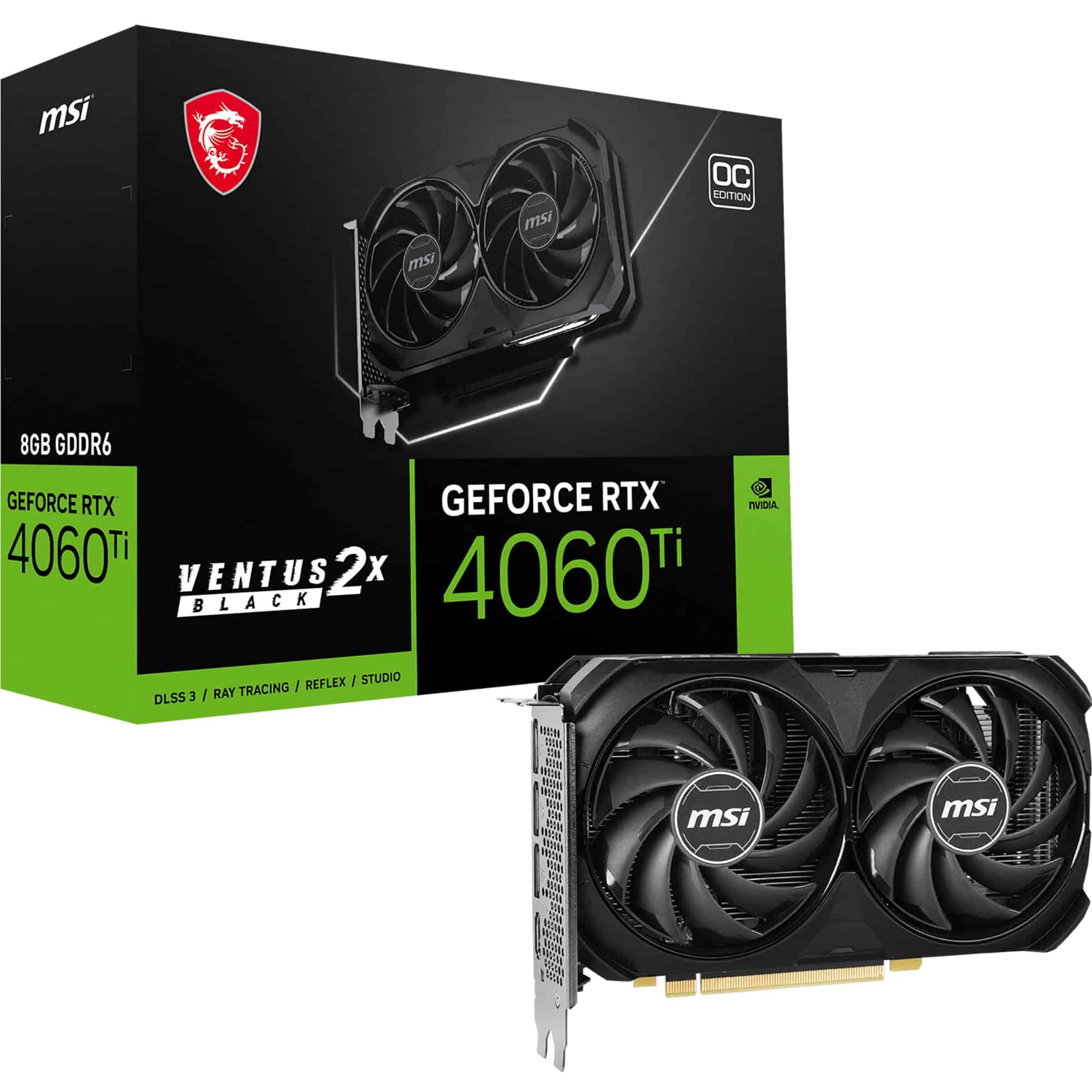
| GPU | May 2025 Share | Change vs. April |
|---|---|---|
| RTX 4060 Laptop | 4.65% | ▼ 0.34% |
| RTX 4060 Desktop | 4.44% | ▼ 0.07% |
| RTX 4060 Ti | 3.11% | ▼ 0.14% |
The RTX 4060 lineup, part of NVIDIA’s Ada Lovelace architecture, is steadily making gains—but its momentum has slowed. The desktop RTX 4060 now trails just behind the RTX 3060, and while it offers DLSS 3 and better ray tracing support, the smaller 8GB VRAM is a turn-off for some players in 2025.
Older Budget Cards Still Holding On
| GPU | May 2025 Share |
|---|---|
| GTX 1650 | 3.47% |
| GTX 1060 | 2.24% |
| GTX 1050 Ti | 1.73% |
Cards like the GTX 1650 and 1060 are aging gracefully. While no longer ideal for the latest AAA games at high settings, these GPUs are more than capable of powering Fortnite, CS2, and League of Legends at solid framerates. Their widespread use also shows that many gamers still prioritize affordability and compatibility over performance.
Laptop GPUs Are Taking Over
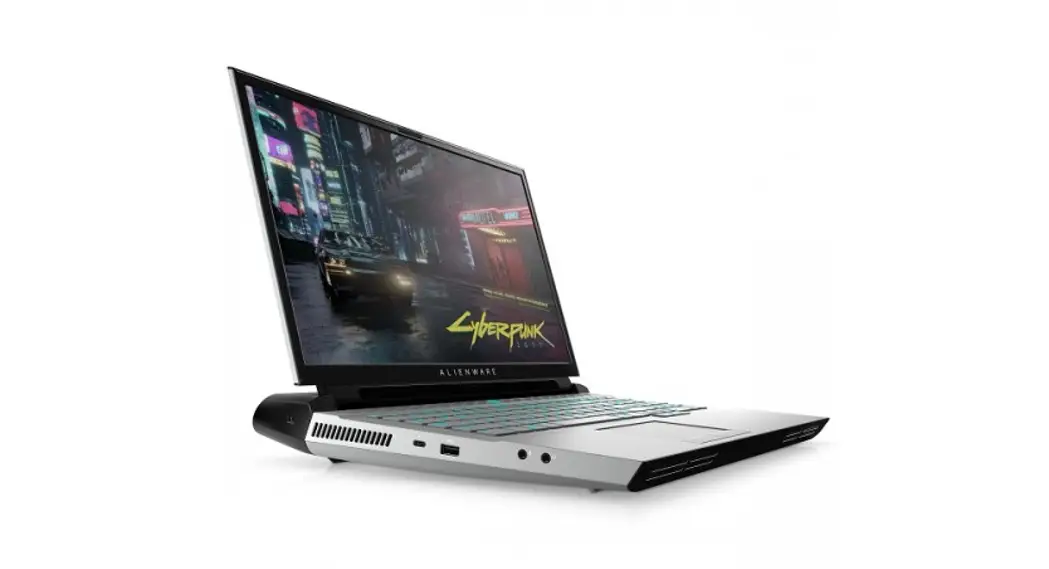
Several laptop variants are now among the most-used GPUs on Steam:
- RTX 4060 Laptop: 4.65%
- RTX 3060 Laptop: 2.52%
- RTX 4050 Laptop: 1.33%
The rise of gaming laptops—especially with performance-efficient chips like the RTX 4060 Laptop—reflects how portable gaming has become more mainstream. Valve’s Steam Deck and the upcoming wave of handheld Windows gaming PCs (like ASUS ROG Ally and Lenovo Legion Go) may further tilt the scales in favor of mobile GPUs.
AMD GPUs Are Gaining, Slowly
| AMD GPU | May 2025 Share | Change |
|---|---|---|
| AMD Radeon Graphics | 2.23% | ▲ 0.13% |
| RX 6600 | 0.93% | — |
| RX 6700 XT | 0.69% | — |
| RX 580 | 0.75% | ▲ 0.02% |
While AMD still trails NVIDIA significantly, it’s slowly closing the gap. The RX 6600 remains a great budget performer, and the RX 6700 XT has carved out a niche among 1440p gamers who value high VRAM and strong raster performance over ray tracing features.
DirectX 12 Adoption Is Nearly Universal
- DX12 GPUs: 89.44% of all users
- DX11 GPUs: 0.58%
- DX10 and below: 9.98%
Games targeting the Steam base should now assume DirectX 12 support as standard. The near-total dominance of DX12 GPUs means developers can continue pushing advanced lighting, shader, and rendering techniques—without worrying about legacy support holding them back.
Top 10 GPUs on Steam (May 2025)
| Rank | GPU | Share |
|---|---|---|
| 1 | NVIDIA GeForce RTX 3060 | 4.73% |
| 2 | NVIDIA RTX 4060 Laptop GPU | 4.65% |
| 3 | NVIDIA RTX 4060 (Desktop) | 4.44% |
| 4 | NVIDIA GTX 1650 | 3.47% |
| 5 | NVIDIA RTX 4060 Ti | 3.11% |
| 6 | NVIDIA RTX 3050 | 3.09% |
| 7 | NVIDIA RTX 3060 Ti | 2.79% |
| 8 | NVIDIA RTX 3070 | 2.65% |
| 9 | NVIDIA RTX 3060 Laptop GPU | 2.52% |
| 10 | NVIDIA RTX 2060 | 2.44% |
These cards represent the sweet spot for most Steam users. The dominance of mid-range RTX 30- and 40-series cards shows that ray tracing is no longer a high-end-only feature—and DLSS adoption is likely higher than ever.
4070 Ti vs 3080: Which Is A Better Value in 2025?
Are you trying to decide between the RTX 4070 Ti and RTX 3080 for your next GPU upgrade? Both cards offer impressive performance, but they have key differences worth considering before making your purchase.
The RTX 4070 Ti outperforms the RTX 3080 by approximately 23-26% at 1440p resolution, making it the better choice for gamers seeking top-tier performance. However, in 4K gaming scenarios, the RTX 3080’s higher memory bandwidth sometimes gives it an edge despite its lower 10GB capacity compared to the 4070 Ti’s 12GB.
The 4070 Ti also brings other advantages to the table. It has a lower power draw than the 3080, which means better energy efficiency and potentially cooler operation. Plus, it offers performance similar to the premium RTX 3090 Ti but at less than half the price, making it an excellent value proposition for those willing to invest in newer technology.
Choosing between an RTX 4070 Ti and an RTX 3080 in mid-2025 involves weighing raw performance, modern features, power efficiency, and, crucially, price. Here’s a breakdown to help you decide which offers better value:
Key Considerations in 2025:
- Pricing:
- RTX 4070 Ti: New units are generally found in the range of $550-$800, with some potentially going higher.
- RTX 3080: New 3080s are harder to find and can still be quite expensive (around $1,150+). However, used or refurbished units are available for $400-$600, making them significantly more competitive in terms of initial cost.
- Performance:
- Raw Gaming Performance: The RTX 3080 generally offers slightly better raw performance, especially at 4K resolution, due to its higher CUDA core count and wider memory bus (320-bit vs. 192-bit).
- 1440p and DLSS 3: For 1440p gaming, the RTX 4070 Ti often surpasses the 3080, particularly when utilizing DLSS 3 with Frame Generation.
- Ray Tracing: The RTX 4070 Ti, with its 3rd Gen RT Cores, has a notable advantage in ray tracing performance compared to the 3080’s 2nd Gen RT Cores.
- Overall Benchmarks: PassMark benchmarks from June 2025 show the RTX 4070 Ti with an average G3D Mark of 31,641, while the RTX 3080 is at 25,180, suggesting the 4070 Ti often pulls ahead in synthetic benchmarks.
- Features:
- DLSS 3 with Frame Generation: This is a major advantage for the RTX 4070 Ti. DLSS 3, powered by the Ada Lovelace architecture’s new Tensor Cores and Optical Flow Accelerator, uses AI to generate additional frames, significantly boosting FPS in supported games. The RTX 3080 only supports DLSS 2.
- Power Efficiency: The RTX 4070 Ti is significantly more power-efficient, with a TDP (Thermal Design Power) of around 200-285W, compared to the RTX 3080’s 320W. This translates to lower electricity bills and potentially cooler system temperatures.
- VRAM: The RTX 4070 Ti comes with 12GB of GDDR6X VRAM, while the most common RTX 3080 models have 10GB (though some have 12GB). For future-proofing and demanding titles, more VRAM is generally better.
- Future-Proofing:
- The Ada Lovelace architecture of the RTX 4070 Ti is newer and will likely receive driver optimizations and feature support for a longer period than the Ampere architecture of the RTX 3080.
- DLSS 3’s Frame Generation is a feature that will become increasingly prevalent and beneficial in new games.
Which is a Better Value in 2025?
The answer largely depends on your priorities:
- For the Best Overall Value and Modern Features (especially new builds): RTX 4070 Ti
- If you’re building a new PC or upgrading from an older card and want a balance of performance, power efficiency, and access to the latest NVIDIA features like DLSS 3 with Frame Generation, the RTX 4070 Ti is generally the better choice. Its efficiency and newer architecture make it more “future-ready.”
- For Raw 4K Performance and Budget-Conscious Buyers (especially used): RTX 3080
- If your primary goal is maximizing raw 4K gaming performance and you can find a used RTX 3080 at a significantly lower price (around $400-$600), it can still be a good value. It offers excellent performance at its price point, especially if power consumption isn’t a major concern and you don’t heavily rely on Frame Generation.
- Be cautious with used cards, ensuring their condition and reliability.
In summary:
| Feature | NVIDIA GeForce RTX 4070 Ti | NVIDIA GeForce RTX 3080 |
|---|---|---|
| Architecture | Ada Lovelace (Newer) | Ampere (Older) |
| VRAM | 12GB GDDR6X | 10GB / 12GB GDDR6X |
| Power Consumption | More efficient (200-285W TDP) | Less efficient (320W TDP) |
| DLSS | DLSS 3 (with Frame Generation) | DLSS 2 |
| Ray Tracing | Superior (3rd Gen RT Cores) | Good (2nd Gen RT Cores) |
| Raw 4K Gaming | Strong, but sometimes slightly edged out by 3080 without DLSS 3 | Slightly better raw performance in some 4K titles |
| 1440p Gaming | Excellent, often superior with DLSS 3 | Excellent |
| Price (New in 2025) | ~$550 – $800+ | ~$1,150+ (new, if available) |
| Price (Used in 2025) | Variable, likely higher than used 3080 | ~$400 – $600 |
| Future-Proofing | Better due to newer architecture and DLSS 3 | Less, as it’s an older generation with no DLSS 3 |
Export to Sheets
For most users looking for a balance of modern features, efficiency, and strong performance, especially at 1440p, the RTX 4070 Ti is likely the better value in 2025. However, if you find a great deal on a used RTX 3080 and primarily play at 4K without a strong need for DLSS 3, it still offers compelling raw performance for the price.
Key Takeaways
- The RTX 4070 Ti delivers about 23-26% better performance than the RTX 3080 at 1440p resolution.
- The RTX 3080 sometimes performs better at 4K resolution due to its higher memory bandwidth.
- The RTX 4070 Ti offers better power efficiency and runs cooler while providing similar performance to the much more expensive 3090 Ti.
Specifications Comparison
The RTX 4070 Ti and RTX 3080 represent different GPU generations with distinct architectural designs and performance characteristics. Both cards offer high-end gaming performance but differ significantly in their technical specifications, power requirements, and thermal designs.
Architecture
The RTX 4070 Ti is built on Nvidia’s newer Ada Lovelace architecture using a 5nm manufacturing process. This modern design allows for better efficiency and performance per watt compared to previous generations.
The RTX 3080, on the other hand, utilizes the older Ampere architecture with an 8nm process. While still powerful, this architectural difference is fundamental to understanding the performance gap between these two cards.
Ada Lovelace brings several advancements, including improved RT cores for ray tracing and enhanced Tensor cores for AI-based features. The 4070 Ti also supports DLSS 3 with Frame Generation, a technology not available on the 3080.
Despite being from a newer generation, the 4070 Ti has fewer CUDA cores (7,680) compared to the 3080 (8,704), yet delivers better performance in many scenarios thanks to architectural improvements.
VRAM and Memory Bandwidth
| Specification | RTX 4070 Ti | RTX 3080 |
|---|---|---|
| VRAM | 12GB GDDR6X | 10GB GDDR6X |
| Memory Interface | 192-bit | 320-bit |
| Memory Bandwidth | 504.2 GB/s | 760 GB/s |
The RTX 4070 Ti offers more VRAM (12GB vs 10GB), which can be beneficial for modern games with high-resolution textures and memory-intensive applications.
However, the RTX 3080 has a significant advantage in memory bandwidth (760 GB/s vs 504.2 GB/s) due to its wider 320-bit memory interface compared to the 4070 Ti’s narrower 192-bit interface.
This bandwidth difference could impact performance in scenarios where memory throughput is the limiting factor, especially at higher resolutions like 4K.
Power Consumption and TGP
The RTX 4070 Ti has a Total Graphics Power (TGP) of 285 watts, making it more power-efficient than the RTX 3080 which has a TGP of 320 watts. This 35-watt difference translates to lower power bills and less heat generation.
Under full load, the efficiency of the Ada Lovelace architecture becomes apparent, with the 4070 Ti delivering similar or better performance while consuming less power.
The power connectors also differ between the cards. Most 4070 Ti models use the newer 16-pin PCIe 5.0 connector, while the 3080 typically uses traditional 8-pin PCIe power connectors.
For system builders, this power efficiency means the 4070 Ti might work with a smaller power supply, potentially reducing overall system costs.
Thermal Design
Both cards implement advanced cooling solutions, though specific designs vary by manufacturer. The lower TGP of the 4070 Ti (285W vs 320W) generally results in cooler operation compared to the RTX 3080.
Founders Edition models of both cards use similar dual-axial fan designs, but the 4070 Ti typically runs 3-5°C cooler under full load thanks to its more efficient architecture and lower power requirements.
Partner models offer various cooling solutions, from triple-fan designs to liquid cooling options. The 4070 Ti’s thermal advantage makes it easier for manufacturers to create smaller, more compact designs.
Noise levels are generally lower on the 4070 Ti due to reduced cooling requirements, making it potentially better for noise-sensitive environments or compact builds where thermal management is crucial.
Performance Metrics
The RTX 4070 Ti and RTX 3080 offer different performance levels across various gaming scenarios and applications. Both cards represent different generations of NVIDIA’s GPU architecture, with the 4070 Ti being the newer Ada Lovelace design compared to the 3080’s Ampere technology.
Gaming Performance at Different Resolutions
At 1080p resolution, the RTX 4070 Ti outperforms the RTX 3080 by approximately 10%. This advantage becomes more noticeable in certain titles that benefit from the 4070 Ti’s improved architecture.
When moving to 1440p gaming, which is popular among enthusiasts, the performance gap narrows slightly. The 4070 Ti maintains about a 19% advantage on average over the 3080 10GB model across various titles.
At 4K resolution, where GPU power becomes critical, both cards show their capabilities. The 4070 Ti continues to lead with performance margins typically peaking around 30% in some demanding titles.
Popular Game Performance (Average FPS at 4K)
| Game | RTX 4070 Ti | RTX 3080 |
|---|---|---|
| Cyberpunk 2077 | 51 | 42 |
| Modern AAA Titles | 63 | 53 |
| Competitive Games | 115+ | 95+ |
Benchmarking Results
Synthetic benchmarks provide standardized metrics for comparison. In 3DMark Steel Nomad Lite, the RTX 4070 Ti scores 23,649 points versus the RTX 3080’s 19,018 points, representing a 24% improvement.
The 4070 Ti benefits from being manufactured using a more efficient 5nm process technology compared to the 3080’s 8nm process. This contributes to better performance per watt metrics.
Overall raw performance puts the 4070 Ti closer to the previous generation’s high-end RTX 3090 Ti in many tests. Some users consider the 4070 Ti more of a side-grade than a significant upgrade from the 3080 Ti, despite the generational difference.
Ray Tracing and DLSS Technologies
Ray tracing performance shows significant improvements with the 4070 Ti. Its newer RT cores provide enhanced capabilities for realistic lighting and reflections in supported games.
DLSS implementation differs between the generations. The 4070 Ti supports DLSS 3 with Frame Generation technology, which can substantially boost frame rates in compatible titles beyond what’s possible with the 3080’s DLSS 2 support.
In Cyberpunk 2077 with ray tracing enabled and DLSS active, the 4070 Ti can maintain playable framerates at 4K settings where the 3080 might struggle. With DLSS 3 enabled on the 4070 Ti, frame rates can increase by 40-60% compared to native rendering.
The combination of improved ray tracing hardware and DLSS 3 gives the 4070 Ti a definite edge for future-proofing, particularly in titles that will continue implementing these technologies.
Connectivity and Compatibility
Both the RTX 4070 Ti and RTX 3080 offer modern connectivity options that support high-resolution displays and fast data transfer. Their interfaces determine how these cards interact with your system and external devices.
Display Outputs
The RTX 4070 Ti and RTX 3080 feature similar display output configurations. Both cards come with multiple DisplayPort 1.4a connections that support up to 8K resolution at 60Hz with Display Stream Compression (DSC).
They also include HDMI 2.1 ports, allowing for 4K gaming at 120Hz and even 8K at 60Hz on compatible displays. HDMI 2.1 provides bandwidth up to 48 Gbps, which is essential for high refresh rate gaming at higher resolutions.
The standard configuration for both cards typically includes:
- 3x DisplayPort 1.4a
- 1x HDMI 2.1
This setup allows users to connect multiple monitors simultaneously for productivity or immersive gaming experiences.
PCIe Interface
The RTX 4070 Ti utilizes a PCIe 4.0 x16 interface, the same as the RTX 3080. This provides plenty of bandwidth for data transfer between the GPU and the rest of the system.
While both cards use PCIe 4.0, they don’t fully saturate the available bandwidth during normal gaming operations. This means either card will perform similarly in PCIe 3.0 systems with minimal performance impact (typically less than 3%).
The physical size of both cards requires at least 2-3 PCIe slots worth of space, though exact dimensions vary by manufacturer. Power requirements differ slightly, with the 4070 Ti generally being more power-efficient despite similar performance levels.
Most modern motherboards from 2020 onward should be fully compatible with both cards, though a BIOS update may be required for optimal performance.
Advanced Features and Technologies
The RTX 4070 Ti and RTX 3080 both offer cutting-edge technologies, but their implementations differ in key ways. The 4070 Ti brings newer architecture advantages while the 3080 maintains strong raw performance capabilities.
Machine Learning and AI Capabilities
Both GPUs feature NVIDIA’s tensor cores, which are specialized processing units designed for AI and machine learning tasks. The 4070 Ti benefits from newer fourth-generation tensor cores, providing more efficient AI processing compared to the third-generation cores in the 3080.
For gamers and content creators, these differences manifest in DLSS performance. The 4070 Ti supports DLSS 3 with Frame Generation technology, a significant upgrade over the DLSS 2 available on the 3080. This newer implementation can dramatically boost frame rates in supported games.
The 4070 Ti’s AI capabilities also provide better noise reduction in creative applications and faster rendering in 3D modeling software that leverages machine learning.
API Support and Software Integration
Both cards offer full DirectX 12 Ultimate (12_2) support, ensuring compatibility with the latest gaming titles and graphical features. This includes hardware-accelerated ray tracing and variable rate shading.
The 4070 Ti brings improved driver support for newer APIs and optimizations for current software applications. Both cards work with NVIDIA G-Sync technology to eliminate screen tearing, though the implementation is more refined on the newer 4070 Ti.
For creative professionals, the 4070 Ti offers better integration with NVIDIA Studio drivers and slightly improved performance in applications like Blender, DaVinci Resolve, and Adobe Premiere Pro.
The 4070 Ti also features enhanced encoding/decoding capabilities with better AV1 codec support, beneficial for streamers and video content creators.
Frequently Asked Questions
Both the RTX 4070 Ti and RTX 3080 are powerful graphics cards with distinct advantages. These common questions address specific performance metrics, power requirements, and long-term value considerations.
How do performance benchmarks compare between the 4070 Ti and the 3080 in current AAA gaming titles?
The RTX 4070 Ti generally outperforms the RTX 3080 in most current AAA gaming titles. Benchmark results show the 4070 Ti delivers approximately 19% better performance on average compared to the 3080.
At 1080p resolution, the performance gap is more noticeable with the 4070 Ti pulling ahead by about 10-15%. Some games show performance margins reaching up to 40% in favor of the 4070 Ti.
At 4K resolution, the gap narrows slightly. The 3080’s higher memory bandwidth sometimes allows it to perform better in memory-intensive 4K scenarios despite its lower VRAM capacity.
What are the differences in ray tracing capabilities between the 4070 Ti and the 3080 series?
The 4070 Ti features NVIDIA’s newer Ada Lovelace architecture with improved ray tracing cores. This allows for more efficient ray tracing performance compared to the 3080’s Ampere architecture.
In ray-traced games, the 4070 Ti typically delivers 20-30% better performance. This improvement is especially noticeable in games with heavy ray tracing effects like Cyberpunk 2077 and Metro Exodus.
The 4070 Ti also includes newer RT cores that handle ray-traced calculations more efficiently, resulting in less of a performance hit when enabling these features.
Can the 4070 Ti be considered a suitable upgrade from the 3080 for 4K gaming?
For most 4K gamers, the performance difference between the 4070 Ti and 3080 may not justify an immediate upgrade. The improvement at 4K resolution is less pronounced than at lower resolutions.
If you already own an RTX 3080, the 15-20% performance gain at 4K may not provide a significantly different gaming experience. However, the 4070 Ti does offer better frame rates in demanding titles.
Users seeking 4K gaming with ray tracing enabled will see more meaningful improvements with the 4070 Ti thanks to its more advanced RT cores and DLSS 3 Frame Generation technology.
How do the memory specifications differ between the 4070 Ti and the 3080, and what impact does that have on gaming and creative workload performance?
The RTX 4070 Ti comes with 12GB of GDDR6X memory while the standard RTX 3080 has 10GB. This extra VRAM benefits memory-intensive applications and games with high-resolution textures.
Despite having more VRAM, the 4070 Ti has a narrower memory bus (192-bit vs. 320-bit on the 3080). This gives the 3080 higher raw memory bandwidth, which can benefit certain 4K workloads.
For creative applications like video editing and 3D rendering, the extra 2GB of VRAM on the 4070 Ti can prevent memory bottlenecks when working with complex projects.
What is the power consumption comparison of the 4070 Ti versus the 3080 and how does that translate to power efficiency?
The RTX 4070 Ti is significantly more power-efficient than the RTX 3080. The 4070 Ti typically draws about 285W under load compared to the 3080’s 320W or more.
This improved efficiency means the 4070 Ti delivers better performance per watt. It generates less heat and may allow for quieter operation or smaller power supplies in some systems.
The lower power consumption also translates to potential savings on electricity bills, especially for users who game or use their systems heavily.
In terms of future-proofing, how does the 4070 Ti compare to the 3080 considering VRAM, DLSS, and other emerging technologies?
The 4070 Ti has a clear advantage for future-proofing with its support for DLSS 3 Frame Generation, which the 3080 lacks. This technology can significantly boost frame rates in supported games.
The extra 2GB of VRAM (12GB vs 10GB) gives the 4070 Ti more headroom for future games that may require more video memory, especially at higher resolutions with detailed textures.
The newer architecture of the 4070 Ti also means it will likely receive optimization updates for longer, potentially extending its useful lifespan for demanding applications and games.

